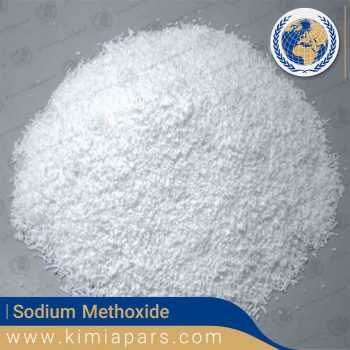Sodium Methoxide
- Description
Description
Sodium Methoxide
Chemical Formula of Sodium Methoxide: NaOCH3
Other names: Sodium Methylate, Sodium Salt
Appearance: White Crystalline Powder
Uses of Sodium Methoxide:
- Organic Chemistry: it is used in the synthesis of several chemical compounds such as pharmaceuticals and agrichemicals. It is also used as a base in aldol condensations and dehydrohalogenations. It acts as a nucleophile in the manufacturing of methyl ethers.
- Pharmaceutical Industry: it is used in the manufacture of substances like Vitamins A1 and B1, Trimethoprim, Sulfadiazine, Sulfadoxine, Sulfamethoxypyridazine
Biodiesel Industry: it is used as a catalyst for producing fatty acid methyl esters or FAMEs. - It can be used for processing edible oils and fats and also in the preparation of some other chemical products.
- It can be used as an edible catalyst as well as an analytical reagent.
- It can be used in production of pesticides.
Packaging:
Payment term: 100% cash in advance
Min order of Calcium Chloride: 1 * 20’ft container
Sodium methoxide, also known as sodium methylate, is an inorganic compound composed of sodium and methoxide ions with the chemical formula NaOCH3. It is a colorless to yellowish-brown liquid that is highly soluble in water and is commonly used in various industries as a strong base, a catalyst, and a chemical intermediate.
In the chemicals industry, sodium methoxide is mainly used as a catalyst for the production of biofuels, detergents, and soaps. It is also utilized in the production of methacrylic acid, which is a starting material for the manufacture of polymethyl methacrylate (PMMA), a type of plastic commonly used in various applications such as optical lenses, cell phone screens, and safety glasses.
Another significant use of sodium methoxide is in the synthesis of alkylates, which are important intermediates for the production of gasoline, diesel fuel, and other petrochemical products. Sodium methoxide reacts with alcohols to form alkylates, which are then used to produce high-octane gasoline and diesel fuel additives. This reaction is known as the alkylation process and is an essential step in the production of high-quality fuels.
In the pharmaceutical industry, sodium methoxide is used as a reagent in the synthesis of various drugs, including anti-inflammatory drugs, cardiovascular drugs, and antifungal drugs. It is also used as a reagent in the production of the active ingredient in aspirin, salicylic acid.
Sodium methoxide is also utilized in the food industry as a reagent in the production of flavor and fragrance compounds. In this application, it acts as a catalyst in the esterification of carboxylic acids and alcohols to form esters, which are used to impart flavor and fragrance to food and beverage products.
Sodium Methoxide Production
Sodium methoxide is produced by the reaction of methanol and sodium hydroxide. In this reaction, methanol reacts with sodium hydroxide to produce sodium methoxide and water. The reaction is exothermic, meaning that it releases heat, and is typically performed in a reactor vessel with agitation to ensure complete mixing of the reactants.
The reaction is highly efficient and typically produces a high yield of sodium methoxide. The purity of the product depends on the purity of the starting materials and the conditions under which the reaction is performed. High-purity sodium methoxide is usually produced by distillation, which removes any impurities that may be present in the product.
Handling and Safety Considerations
Sodium methoxide is a highly reactive and potentially dangerous chemical that must be handled with care. It is extremely flammable and can ignite or explode if it comes into contact with a spark or open flame. It is also corrosive and can cause severe burns to the skin and eyes if it comes into contact with them.
When handling sodium methoxide, it is important to wear protective clothing, such as gloves, goggles, and a lab coat, to minimize the risk of skin and eye irritation. It is also important to work in a well-ventilated area to minimize the risk of inhaling fumes that may be produced by the chemical.
In the event of a spill or release of sodium methoxide, it is important to evacuate the area and call for professional assistance. Sodium methoxide should not be handled by untrained personnel and should be handled only by individuals who have received proper training and are familiar with the hazards associated with the chemical.

